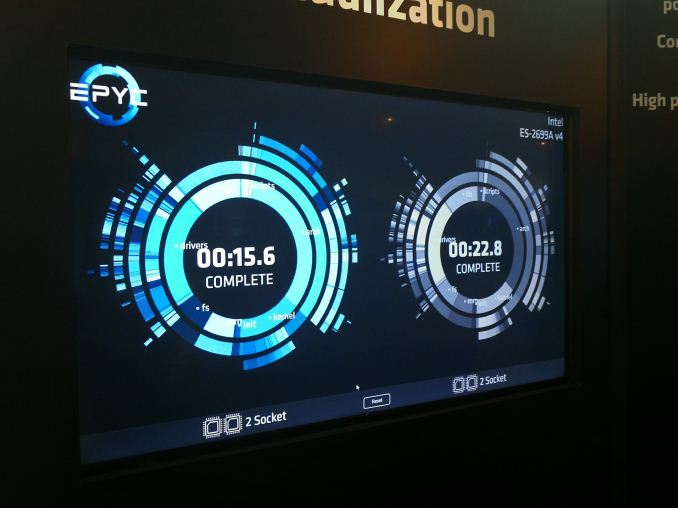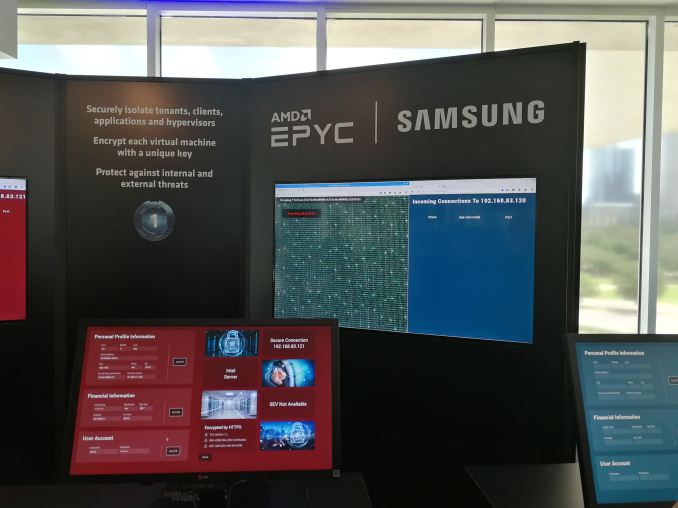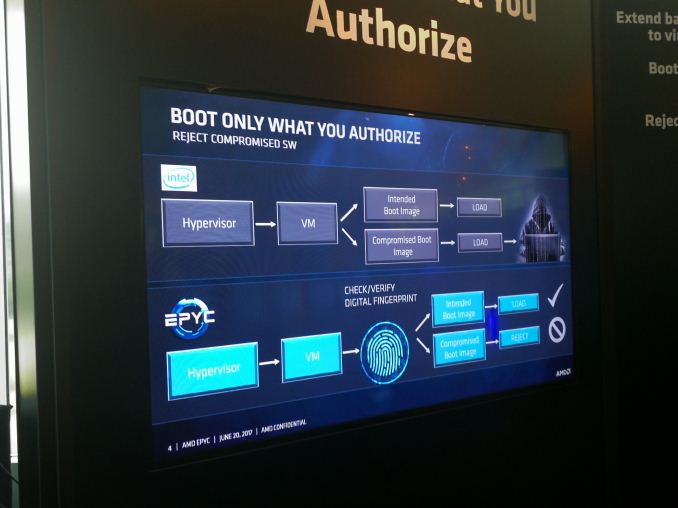AMD's Future in Servers: New 7000-Series CPUs Launched and EPYC Analysis
by Ian Cutress on June 20, 2017 4:00 PM EST- Posted in
- CPUs
- AMD
- Enterprise CPUs
- EPYC
- Whitehaven
- 1P
- 2P
AMD’s Reach and Ecosystem
As mentioned at the top of the piece, the big launch for AMD this year is the server platform. EPYC has an opportunity to reinvigorate AMD’s bottom line to the tune of several billion dollars a year, if they can get traction in the market. Depending on which Analyst you speak to, some are predicting anywhere from a 5% to a 25% gain in market share for AMD, into a ~$25B total addressable market. Given AMD’s worth, that would mean that the balance sheet in a few years might look as if 80% of it is provided by the server team.
As part of the launch today, AMD is announcing partners working with them to optimize the platform for various workloads. Sources say that this includes all the major cloud providers, as well as all the major OEMs. We saw several demo systems at the launch event with partners as well, such as HPE and Dell.

The variety of internal systems used by AMD for the demonstrations (some Dell/HP logos)

Using 8 VMs to compile the Linux Kernel in one go on AMD vs Intel 2P systems
Of course, the big question is if AMD is actually getting in significant orders for processors. Nothing is public on that yet, and we are told that they are likely to be nearer the end of the year. We are eagerly waiting to test the processors when our review systems arrive, and we will provide our performance breakdown soon.
























131 Comments
View All Comments
deltaFx2 - Wednesday, June 21, 2017 - link
That's because intel cheats on SPEC in icc by doing transformations that are specifically targetted at making SPEC faster and nothing else. Libquantum is a particularly egregious example where you nearly double the performance by doing tricks that help nothing else. But this is generally true across the suite. It's not unlike VW's emission defeat devices: do something special when you're being tested.As for Tom's hardware, they're not authorities on anything server. What they know something about is gaming benchmarking, and that's pretty much it. I don't expect he'd know a thing about it, and whether 20% is correct vs 40%. It's a feeble attempt at sounding clever. The people buying this stuff know what they're doing, and aren't going to be influenced by some online reviewer.
Ryan Smith - Tuesday, June 20, 2017 - link
I've posted galleries of the full slide decks. The slide you're interested in is: http://images.anandtech.com/galleries/5699/epyc_te..."Scores for these E5 processors extrapolated from test results published at www.spec.org, applying a conversion multiplier to each published score"
patrickjp93 - Wednesday, June 21, 2017 - link
No, it vastly underestimates and undermines Intel's real-world performance.lefty2 - Tuesday, June 20, 2017 - link
I think you missed the point of the eight-core processor. That's for GPU compute servers, where you want the cheapest processor possible with the most PCIe lanes. It's probably going to be the one that sells the most, because Intel has nothing comparable.Luckz - Tuesday, June 20, 2017 - link
Is this useful for the mining craze?LurkingSince97 - Tuesday, June 20, 2017 - link
probably not. Miners want the most GPU (hashes) per Watt (combined with total price). If they can do that with 5 smaller, cheaper machines vs 1 larger one, they will. Mining does not need coordination across multiple GPUs.The enterprisey compute stuff -- machine learning being a huge one -- often _does_ need to coordinate across GPUs in one big data set and will run in datacenters where consolidation into performance/$ and performance/Watt will often like servers with few CPU and many GPU, with a ton of I/O and connectivity to other servers.
Mining doesn't care about I/O, just total # of ports. People even use tools to split up a x16 bus of a normal consumer motherboard into may smaller PCIe ports each with a GPU on it. The GPU will compute hashes just as well with a x2 port as a x16 one.
KAlmquist - Wednesday, June 21, 2017 - link
EPYC has 128 PCI-e lanes on both 1 socket and 2 socket systems, so if AMD had intended the EPYC 7251 to be used for GPU compute servers, they would have made it part of the single socket lineup. That doesn't mean that the chip won't be used in GPU compute servers; it just means that GPU compute servers are not the market that AMD intended to target with the chip.Zizy - Thursday, June 22, 2017 - link
All these 2P Epyc CPUs should be just fine in 1P as well. Obviously nobody will buy most of them to run in 1P, as 1P are cheaper. It is just 1P that is limited - it can be *only* used in 1P.And given 500-ish price of the chip, I can see why AMD didn't bother to give additional 400 chip for 1P - it wouldn't change anything. And limiting this chip to just 1P would be pointless, as the other segments such as "need tons of memory" would be hurting for no good reason.
armtec - Tuesday, June 20, 2017 - link
NUMA NUMA IEI... I hadn't previously made this connection but now I will every time I need to think about server configs...Barilla - Tuesday, June 20, 2017 - link
I read that header and now that stupid song will be stuck in my head for days...